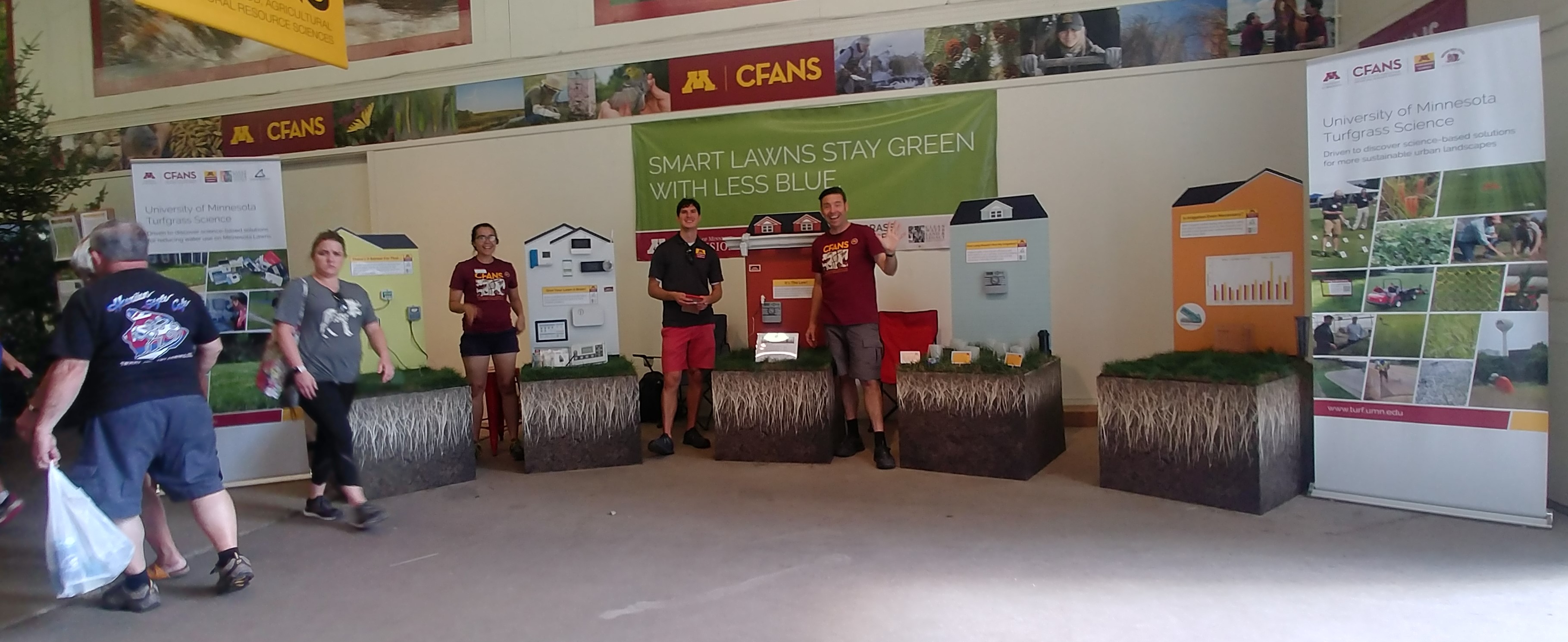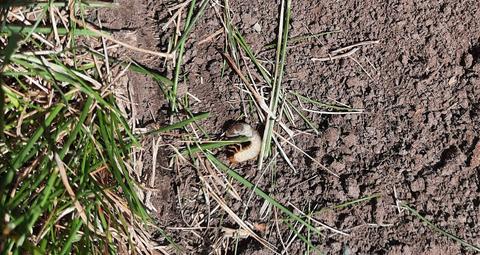Welcome to the latest issue of the Home Lawn Care Newsletter from UMN Turfgrass Science! We will provide monthly updates to address all your lawn care tasks at the times when you need to know.
Aug 18, 2022: Issue 4
Time for important fall lawn care!
We're headed down the home stretch for all fall lawn care. For the lowest input maintenance, make sure your plan includes only the items the lawn needs. For many of you, all that may be needed is a fertilizer application. For others, you may need to do more.
Did you find small areas in the lawn that need patching? Are weeds overtaking your lawn this year? Do you want to overseed your existing lawn to add additional lower-input grasses into your existing lawn? It's time to act so follow the MN Lawn Care Calendar for specific dates.
If you haven't received any rain recently, your lawn may be dormant (brown and not actively growing). Dormant lawns can be damaged by chemical application and fertilizer will be wasted if applied when the grass is not actively growing. Regular watering (or rain events) for a few weeks will break dormancy, allowing for some of those fall lawn care tasks to be accomplished.
Choose the activities you need to this fall:
Continue watering 1" every 10-14 days, including rain amounts. There is still time to consider installing a new smart irrigation system for next year.
Smart Irrigation Controllers from the Metropolitan Council
Continue mowing to a height of 3 1/2 to 4 inches as needed.
Seeding - fall is the best time for this task. Be sure the seeding area is free of weeds before seeding. Most broadleaf weed control requires some time (days to weeks) after application before you can seed. Check label directions early so you have time to seed.
Seed or sod home lawns from UMN Extension
Seeding a fall lawn Part 1
Seeding a fall lawn Part 2
Choose the right grass seed for your lawn
Lawn lawn repair video from UMN Extension; this is geared to spring, but is applicable to fall as well.
Fertilize - if needed. Lawns need nutrients to help them get through winter. For low-input lawns, apply 2/3 of your yearly nitrogen now. The actual amount will vary based on the type of turfgrass, the soil type and your management practices. A fertilizer grade of 24-0-12 (nitrogen-phosphorus-potassium) is a typical formulation that can be found in stores.
Fertilizing lawns from UMN Extension
Before doing the next two items (below) on this list, make sure you've watered 2-3 days ahead of time so the water has time to soak through to about 6 inches, and the machines are able to cut deep enough into the soil.
Dethatch - How do you know if you need it? A quick test is to use a spade to cut a small rectangle into your lawn. Pull up that section and see if the thatch (the brown area right under the surface) is the size of a dime or less. If it's more, water, oxygen and nutrients have a hard time getting through to the roots.
How to control thatch in your lawn from UMN Extension
Aerate - How do you know if you need it? A quick test is to stick a screwdriver into your lawn in several places. If you can't get through the first three inches or so, neither can grass roots. Use an aerator that removes plugs. The plugs should be at least 3-4 inches long and about as round as your finger to do any good.
Broadleaf weed control - Make sure you know what your lawn weeds are. Annual weeds are best treated in the spring so we're talking about treating broadleaf perennials now.
Is this plant a weed? from UMN Extension
Natural herbicides for landscape weed management from Colorado State University Extension
Remember that even natural herbicides must be labeled for safety, since often the concentrations are high enough to be hazardous. For all herbicides, always read and follow label directions so that you are taking appropriate safety precautions and that the treatment is appropriate for the weed you're trying to get rid of.
Next month, we'll hit the popular topic of dormant seeding lawns. It's a great option for Minnesota low-input lawns and bee lawns.
Trending topics
Japanese beetle grubs
Often, folks are worried about Japanese beetles when they see lawn damage from grubs in the early spring or when the adults are attacking their garden plants in June and July. However, now's a good time to see if Japanese beetle grubs are likely to be culprits that will cause damage next spring. Dry summers mean fewer grubs so there may be no need to treat your lawn at all!
From now to September, look for brown patches where you can lift the grass like carpet. If you don't see that but suspect you may have grubs, cut and lift a section of grass that's about a foot square. Do you see 10 grubs in that square foot? If so, verify it as a grub, versus other non-damaging soil dwellers, by following the link below. This year's grubs are hatching and will be eating grass roots 2-3 inches under the soil as they prepare to overwinter. Remember to treat for grubs (and any other pest) only at the right time and with the right stuff.
Japanese beetles in yards and gardens by UMN Extension
Managing the Japanese beetle handbook from the USDA
Managing Japanese beetle feeding from UMN Extension
Yes, there are bugs in your garden, but do you need to stress? from UMN Extension
Events
The UMN Turfgrass Science team will be at:
- Blue Heron Days in Lino Lakes from noon to 4:00pm on Saturday, August 20.
- The Sunday Market at Dancing Bear Chocolate in Minneapolis from 9am to 2pm on Sunday, August 21.
- The Minnesota State Fair in the Agriculture Horticulture Building, August 25 - September 5, 9am to 9pm daily.
- Brown's Creek Watershed District community event at Brown's Creek Park in Stillwater from 10am to 1pm on Saturday, September 10.
- Operations and Maintenance Open House in Brooklyn Park from 9am to noon on Saturday, September 17.
We will be at these events to answer questions on smart irrigation and lawn care as part of our collaboration with the Metropolitan Council.
Research Highlights
The UMN Turfgrass Science team has a lot of experience answering everyone's lawn care questions at the Minnesota State Fair. In fact, some years we track the question topics from all of you for fun and to inform our research efforts. See how your lawn care interests compare with others.
What type of questions did people have at the 2021 Minnesota State Fair? by Shane Evans
Did we answer your question? A follow-up from the 2019 MN State Fair by Ryan Schwab
Don't forget to visit our Minnesota State Fair display this year!

